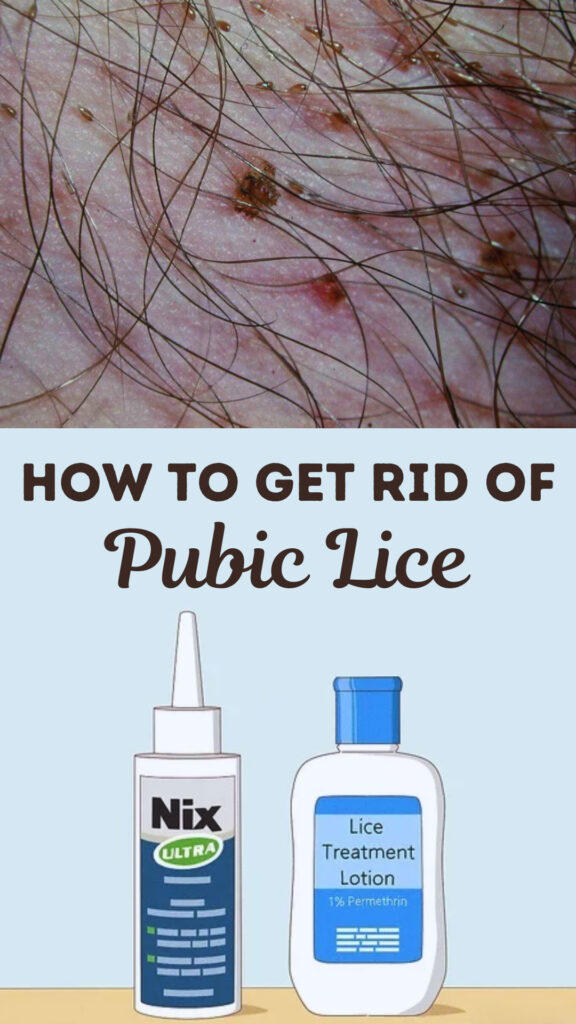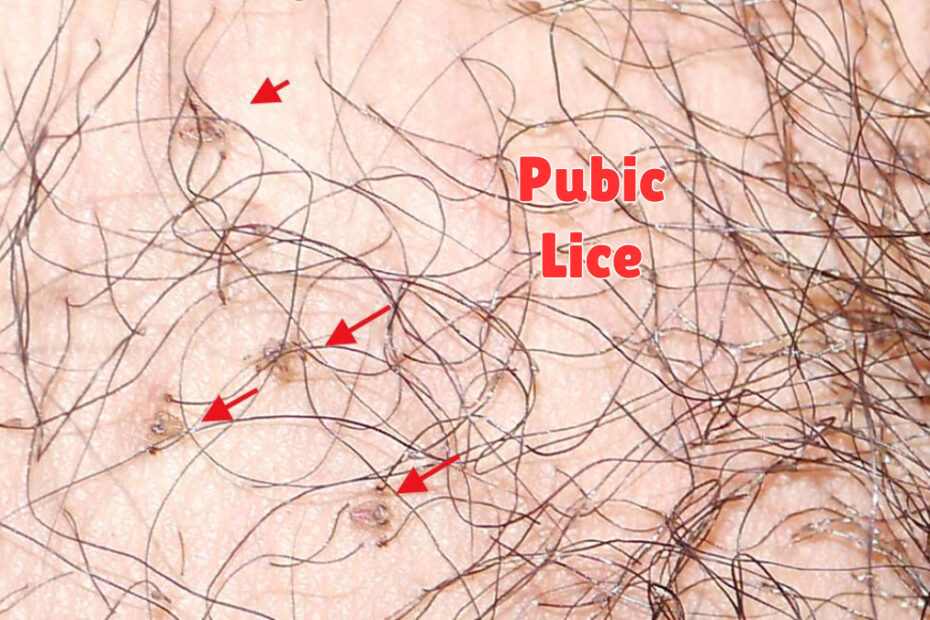Dealing with pubic lice can be both uncomfortable and embarrassing, but you’re not alone. These tiny parasites, often called “crabs,” are more common than you might think. Understanding how to effectively eliminate them is crucial for your comfort and health.
In this guide, you’ll learn practical steps to get rid of pubic lice quickly and efficiently. From over-the-counter treatments to home remedies, we’ll cover all the options so you can choose the best approach for your situation. Say goodbye to itching and irritation and hello to peace of mind.
Key Takeaways
- Identify Pubic Lice: Recognize pubic lice, or “crabs,” by their crab-like appearance, small size (1-2 mm), and presence in coarse hair like the pubic region.
- Transmission Methods: Pubic lice are commonly transmitted through direct sexual contact or indirectly by sharing infested clothing, bedding, or towels.
- Effective Treatments: Various treatments, including over-the-counter options (Permethrin lotion, Pyrethrin-based shampoos, Lindane shampoo) and prescription medications (Ivermectin, Malathion lotion, Benzyl alcohol lotion), can eliminate pubic lice.
- Natural Remedies: Alternatives like tea tree oil, vinegar, and neem oil offer natural solutions, but thorough combing is essential to remove lice and nits.
- Prevention Practices: Maintaining good personal hygiene, practicing safe sexual habits, and conducting regular health screenings can help prevent pubic lice infestations.
- Seek Medical Help: Consult a healthcare provider if symptoms persist, if complications arise, or if over-the-counter treatments are ineffective.

Understanding Pubic Lice
Pubic lice, often referred to as “crabs,” are small parasites that infest the coarse hairs of the human body, typically in the pubic area. Understanding these parasites is crucial for effective treatment and prevention.
What Are Pubic Lice?
Pubic lice are parasitic insects that thrive in human hair. They are:
- Species: Phthirus pubis
- Shape: Crab-like appearance
- Size: Approximately 1-2 mm in length
- Habitat: Coarse human hair such as the pubic region, armpits, and sometimes eyelashes
Pubic lice feed on human blood and lay eggs (nits) at the base of hair strands.
Causes and Transmission
Pubic lice commonly spread through:
- Direct Contact: Sexual contact with an infested person
- Indirect Contact: Sharing infested clothing, bedding, or towels
While sexual transmission is most frequent, non-sexual transmission can occur through close physical contact or sharing infested items.
Symptoms and Diagnosis
Common symptoms of pubic lice infestation include:
- Itching: Intense itching in the infested area, caused by allergic reactions to lice bites
- Visible Eggs: Tiny white or yellow nits attached to hair shafts
- Red Bumps: Small blue or red spots from lice bites
- Lice Sightings: Crawling lice may be visible
For diagnosis, a healthcare provider typically examines the affected area using a magnifying glass to identify live lice or nits. Самкle hair samples may be analyzed to confirm the presence of pubic lice.
Understanding the nature, transmission methods, and symptoms of pubic lice aids in quick recognition and effective management of infestations. Proper diagnosis and timely treatment can prevent discomfort and further spread.
Treatment Options
Several effective treatments exist for eliminating pubic lice. Understanding these options helps you choose the best method to regain comfort and health.
Over-the-Counter Treatments
Over-the-counter treatments are easily accessible and can effectively eliminate pubic lice if used correctly.
- Permethrin Lotion: This 1% lotion kills lice and nits. Apply to the affected area, leave for 10 minutes, and rinse off.
- Pyrethrin-based Shampoos: Products like Rid and A-200 contain natural pyrethrins. Apply to damp hair, leave for 10 minutes, and rinse thoroughly.
- Lindane Shampoo: Follow instructions carefully, as misuse can lead to side effects. Apply to the affected area, leave for 4 minutes, and rinse off.
Check all areas where lice may reside, and use a fine-toothed comb to remove dead lice and nits.
Prescription Medications
Prescription medications are necessary for persistent cases or when over-the-counter treatments aren’t effective.
- Ivermectin: This oral medication, taken as a single dose, kills lice by paralyzing them.
- Malathion Lotion: Apply to affected areas, leave overnight, and wash off the next morning.
- Benzyl Alcohol Lotion: This 5% lotion works by suffocating lice. Apply, leave for 10 minutes, and rinse off.
These medications often need a follow-up application to ensure all lice and nits are eliminated.
Natural Remedies
Natural remedies can be effective for those seeking alternatives to chemical treatments.
- Tea Tree Oil: Known for its insecticidal properties, mix a few drops with carrier oil and apply to the affected area. Leave for 30 minutes, then rinse.
- Vinegar: The acidity helps loosen nits from hair shafts. Dilute with water, apply to the affected area, leave for 30 minutes, then rinse.
- Neem Oil: With natural insecticidal properties, neem oil can be applied directly and left overnight before rinsing off.
Perform a thorough combing to remove any remaining lice and nits after using natural treatments. Reapply as needed based on the severity of the infestation.
Understanding and following these treatment options helps you effectively manage and eliminate pubic lice. Consistency and thoroughness are crucial for completely eradicating these parasites.
Prevention Tips
Avoiding pubic lice involves adopting several key practices. Focusing on personal hygiene, safe sexual habits, and regular health screenings reduces your risk of infestation.
Personal Hygiene
Maintaining good personal hygiene plays a crucial role in preventing pubic lice. Follow these steps:
- Shower daily: Regular washing removes any parasites that may cling to body hair.
- Change your clothes frequently: Ensure you wear clean underwear daily.
- Wash bedding and towels regularly: Use hot water to sanitize these items, eliminating potential lice and their eggs.
Safe Sexual Practices
Safe sexual habits are vital for avoiding pubic lice, as they spread predominantly through intimate contact. Consider these practices:
- Limit the number of sexual partners: Reducing the number of partners lowers your exposure risk.
- Use condoms: While not specifically designed to prevent lice, they provide a barrier that may help reduce transmission.
- Avoid sharing personal items: Do not share clothing, towels, or bedding with others, as lice can travel on these items.
Regular Screening
Regular health checks help identify and manage potential infestations early. Carry out these strategies:
- Self-examine regularly: Look for signs of lice or their eggs in the pubic area.
- Visit a healthcare provider: Periodic screenings by a professional ensure thorough assessments.
- Communicate with partners: Discuss sexual health openly with partners, addressing any concerns or symptoms promptly.
These preventive measures—good hygiene, safe sexual practices, and regular screenings—effectively reduce your risk of encountering pubic lice.
When to Seek Medical Help
In some cases, professional medical assistance becomes necessary to effectively manage pubic lice. Consider consulting a healthcare provider under the following circumstances.
Persistent Symptoms
Persistent symptoms warrant medical attention to prevent further complications. You should seek help if:
- Itching and Irritation: Severe itching doesn’t subside after initial treatment.
- Visible Lice or Nits: Lice or eggs are still present even though over-the-counter treatments.
- Red Bumps and Sores: Skin irritation leads to bruises or infections.
Waiting could worsen these symptoms, making professional medical intervention crucial.
Complications
Complications arise when pubic lice infestations are not adequately treated. You should contact a healthcare provider if you experience:
- Secondary Infections: Signs of bacterial infections, such as increased redness, pus, or pain in the affected area.
- Spread to Other Areas: Lice spread to other coarse hair areas like the armpits, chest, or eyelashes.
- Allergic Reactions: Severe allergic reactions to treatments, including rashes, swelling, or difficulty breathing.
Delaying medical care could escalate these conditions, necessitating prescription medications or specialized treatments.
Summary
Contacting a healthcare provider ensures timely and effective management if you encounter persistent symptoms or complications. Be proactive in seeking professional help to avoid exacerbating the issue.
Conclusion
Effectively managing pubic lice requires a combination of understanding the parasites, choosing the right treatment options, and practicing preventive measures. By being thorough and consistent in your approach, you can ensure complete eradication and avoid future infestations. Remember to maintain good personal hygiene and engage in safe sexual practices to minimize the risk of transmission. If over-the-counter treatments don’t work or if complications arise, don’t hesitate to seek professional medical advice. Taking proactive steps will help you achieve relief and maintain your overall health and well-being.
Frequently Asked Questions
What are pubic lice, and how do they look?
Pubic lice, or “crabs,” are small, crab-like parasites that infest coarse human hair, particularly in the pubic area. They are tiny, usually about 1-2 mm long, and have a grayish-white or tan color. They feed on human blood and lay eggs, known as nits, on hair shafts.
How are pubic lice transmitted?
Pubic lice are primarily spread through direct sexual contact. However, they can also be transmitted indirectly through shared clothing, bedding, or towels.
What are common symptoms of pubic lice infestation?
Symptoms include intense itching in the pubic area, visible eggs (nits) on hair shafts, red bumps from bites, and the presence of crawling lice.
What are the over-the-counter treatments for pubic lice?
Over-the-counter treatments include permethrin lotion, pyrethrin-based shampoos, and lindane shampoo. Proper application according to the product instructions is crucial for effectiveness.
When should I seek medical help for pubic lice?
Consult a healthcare provider if symptoms persist after treatment, visible lice or nits remain, or if severe skin irritation or secondary infections occur. Also, seek help for severe allergic reactions to treatments.
Can I use natural remedies to treat pubic lice?
Yes, natural remedies such as tea tree oil, vinegar, and neem oil can be effective alternatives for those seeking non-chemical treatment options.
How can I prevent pubic lice infestations?
Preventive measures include maintaining personal hygiene, practicing safe sexual habits, not sharing personal items, and regular health screenings. Daily showers, frequent changes of clean underwear, and washing bedding and towels in hot water are also recommended.
How are pubic lice diagnosed?
Healthcare providers diagnose pubic lice by examining the affected area for the presence of lice or nits. Visible signs include intense itching, red bumps, and crawling lice.
What should I do if over-the-counter treatments are not working?
If over-the-counter treatments fail, prescription medications like ivermectin, malathion lotion, or benzyl alcohol lotion may be necessary. Consulting a healthcare provider is recommended for persistent cases.
Can pubic lice infestations lead to other complications?
Yes, complications can include secondary skin infections from scratching, lice spreading to other areas of the body, and severe allergic reactions to treatments. Consulting a healthcare provider can help manage and prevent these complications.
